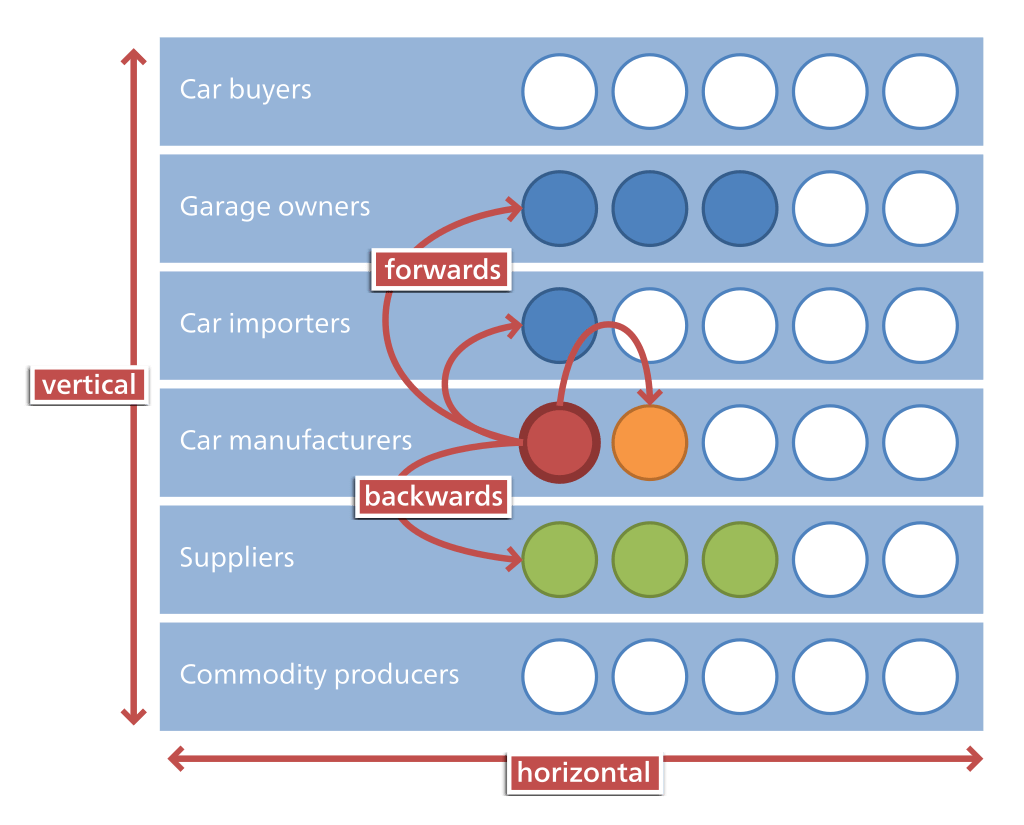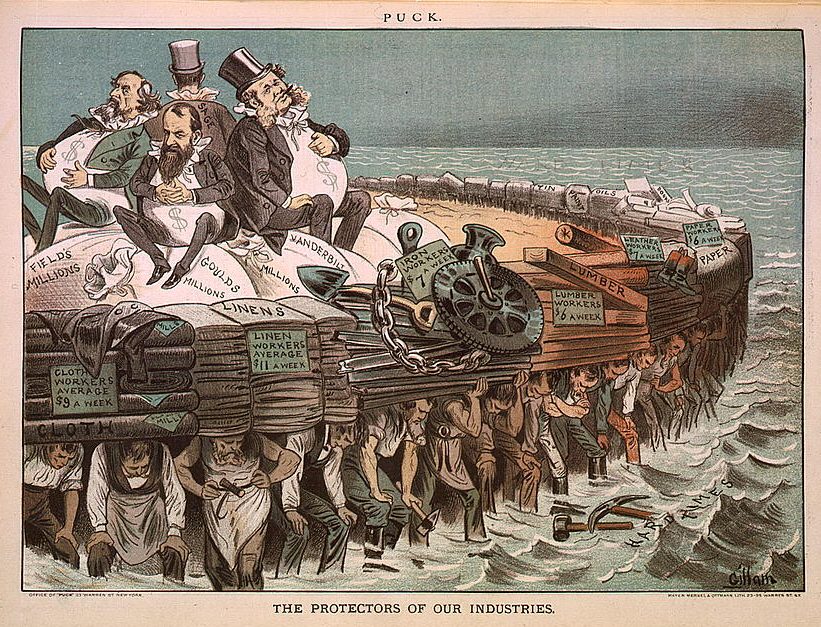What is a part of a city in which members of a minority group are forced to live, originally described an area where Jewish people were required to live in Venice, Italy in the 1500’s?
Ghetto
What made Henry Ford's car factory signifigant?
The Automatic Assembly Line!
Who ran the day to day operations of a corporation?
The Board of Directors
What was the difference between New Immigrants and Old Immigrants?
Old Immigrants came from northern Europe or China in the mid-1800's. They were often skilled workers and settled rurally.
New Immigrants were often from southern and eastern Europe, came from may different backgrounds, and settled in urban areas for industrial work.
What was the role of children during the Gilded Age?
Many children worked in dangerous factories. Children from wealthy families could go to school.
What was a small, low-cost apartment with crowded and often dirty living conditions called?
Tenement
What is the study of how societies manage scarce resources to produce, distribute, and consume goods and services?
Economics!
How did the Bessemer Steel Process transform industry in the United States?
The Bessemer Steel Process transformed the United States by making more steel faster and cheaper, which allowed railroads to expand, cities to grow upward with skyscrapers, factories to build stronger machines, and the nation as a whole to become a major industrial power.
What is the business strategy where a company controls every step of production, from raw materials to finished products?
Vertical Integration
Where were the three immigration processing centers in the United States during this time period? (Must find on map)
Map!
What were the different jobs that middle class white women, working class white women, and black women would have?
Middle- writer, teacher, nurse "Respectable Jobs"
Working- Factories or domestic service
Black- domestic service or opening own businesses
What is the term that describes the problem of having limited resources to meet unlimited wants and needs?
Scarcity!
What was a clothing workshop at the turn of the twentieth century where workers worked long hours in poor conditions for little pay called?
Sweatshop!
Who is the man who became one of the richest men in America by dominating the oil industry and creating a near-monopoly with his company, Standard Oil?
John D. Rockefeller
How could trusts harm small businesses?
They could lower the prices of goods, so small businesses can't compete, then would jack them once those businesses had to close.
What are three ways that settlement houses helped new immigrants assimilate?
-Taught English
-Taught job skills like sewing
-Taught American values (cleanliness, manners, gender roles, ect.)
What are organized work stoppages by employees to demand better pay, hours, or conditions?
Strikes!
What is it called when several corporations come together under one board of trustees to control a market, essentially creating a monopoly?
A trust!
What is a pull factor?
A positive condition or circumstance that attracts people to move to a new country or region.
What are groups of workers who band together to improve pay, hours, and safety in factories and mines?
Labor unions!
What was the Sherman Anti-Trust Act, and why was it ineffective?
It was a law that made it illegal to create trusts or monopolies, but it did not clearly define a trust in legal terms so it was hard to enforce.
What are 5 push and pull factors for immigrants of this time period?
PUSH: Poverty, Lack of jobs, Famine or food shortages, War or political conflict, Religious persecution, Violence and discrimination, High taxes or unfair government treatment, Forced military service, Crop failures, Overcrowding and lack of land to farm
PULL: Job opportunities, Higher wages, Available land, Political freedom, Religious freedom, Safety from violence or persecution, Better living conditions, Access to education, The promise of the “American Dream”, Reuniting with family already in the U.S.
Why did they call it the Gilded Age?
It was called the Gilded Age because the country looked successful on the surface, but underneath there were major problems like poverty, unfair treatment, and bad working conditions.
What is a push factor?
A negative condition or circumstance that drives people to leave their home country or region, forcing them to move elsewhere
What is it called when people or groups from one culture adopt the customs, values, and behaviors of another when in a new country?
Assimilation
Explain an invention that transformed American society:
What is it and how?
Draw a diagram of Horizontal and Vertical Integration.

What were the different experiences of immigrants at Ellis Island vs. Angel Island?
Immigrants at Ellis Island, mostly from Europe, were processed quickly with simple health checks and questions, and most were allowed into the country within a few hours.
Immigrants at Angel Island, mostly from Asia, faced long detentions, harsh interrogations, and discrimination, and many were kept for weeks or months before being allowed to enter—or sent back.
What is the main message or argument this cartoonist is trying to communicate?

Teacher Discretion
What is persecution?
The cruel and unfair treatment of a person or group, often because of their race, religion, political beliefs, or social group.